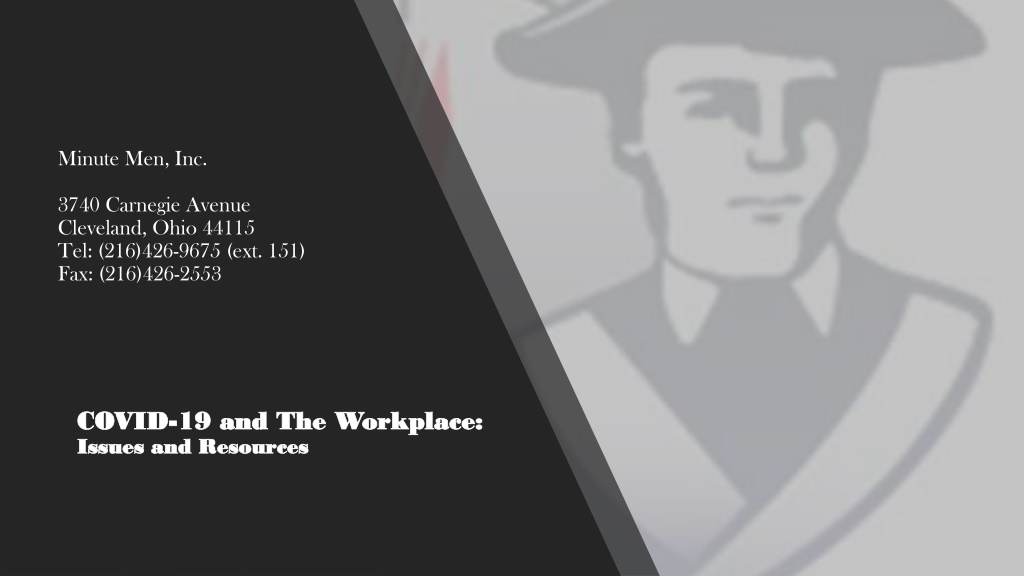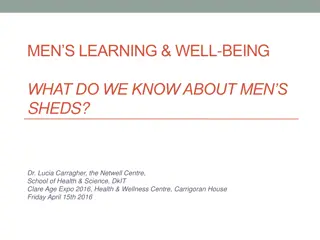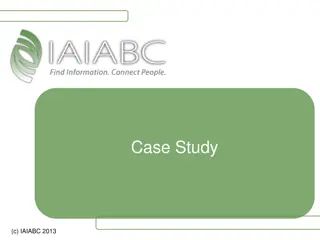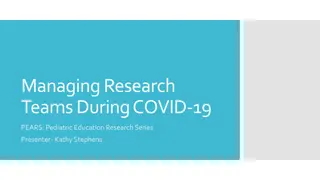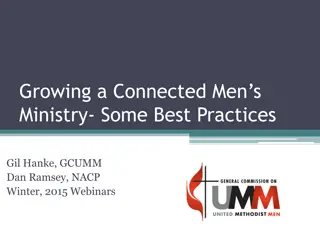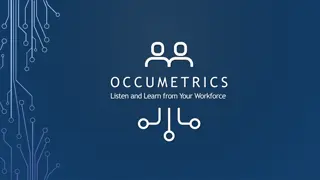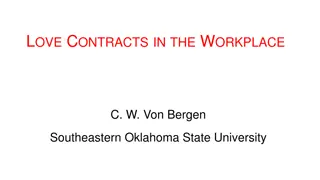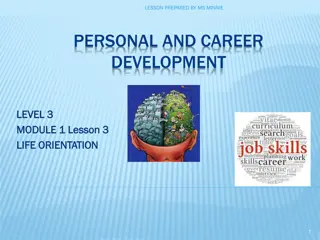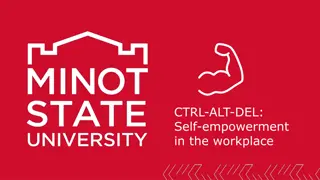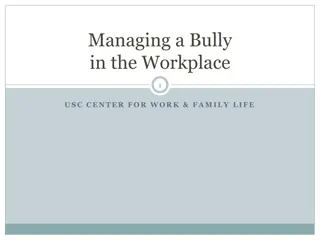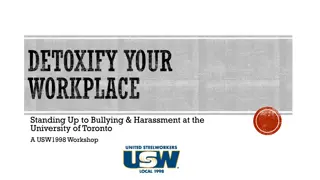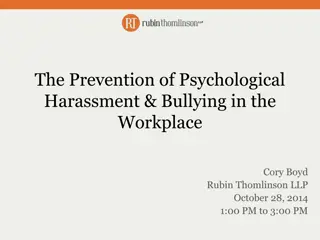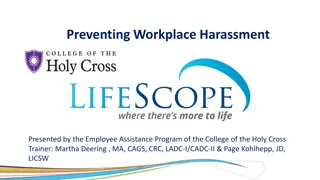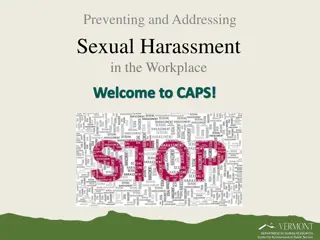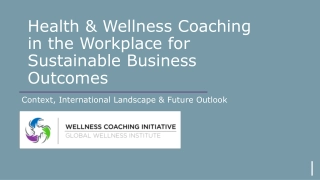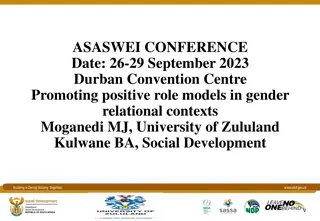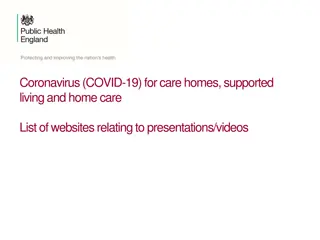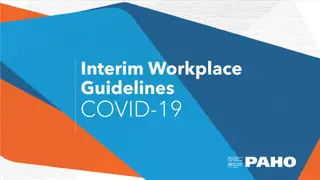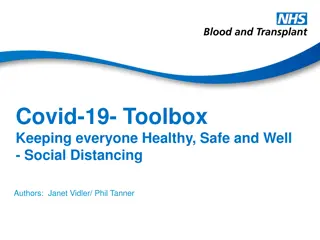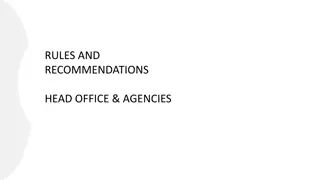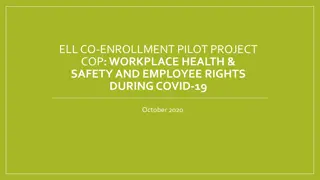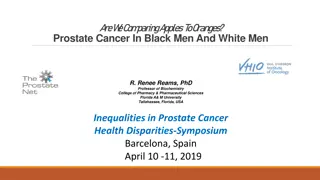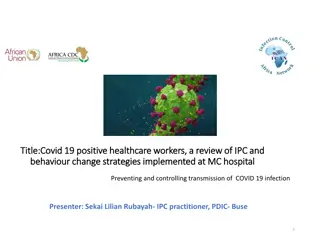Navigating COVID-19 Challenges in the Workplace: Minute Men, Inc.
Explore the impact of COVID-19 on the workplace and find valuable resources at Minute Men, Inc. Addressing key issues and providing support to employees during these challenging times is vital. Contact Minute Men, Inc. in Cleveland, Ohio for assistance and guidance on navigating the complexities of the pandemic.
Download Presentation

Please find below an Image/Link to download the presentation.
The content on the website is provided AS IS for your information and personal use only. It may not be sold, licensed, or shared on other websites without obtaining consent from the author. Download presentation by click this link. If you encounter any issues during the download, it is possible that the publisher has removed the file from their server.
E N D
Presentation Transcript
Minute Men, Inc. 3740 Carnegie Avenue Cleveland, Ohio 44115 Tel: (216)426-9675 (ext. 151) Fax: (216)426-2553 COVID COVID- -19 and The Workplace: 19 and The Workplace: Issues and Resources Issues and Resources
Amends the federal Family and Medical Leave Act (FMLA) to allow employees to take leave for certain child care purposes related to COVID-19. Paid Employee Leave Emergency Family and Medical Leave Expansion Act EFFECTIVE APRIL 2, 2020
Eligible employees of covered employers may take up to 12 weeks of FMLA leave if they are unable to work (or telework) because they must care for their minor child. Paid Employee Leave Emergency Family and Medical Leave Expansion Act The need for leave must be caused by the closing of the child s elementary or high school or place of care, or the unavailability of the child s childcare provider, due to a declared COVID-19 public health emergency.
Paid Employee Leave Child Care Provider means a provider who receives compensation providing childcare services on a regular basis for Emergency Family and Medical Leave Expansion Act
Covered Employers Paid Employee Leave The expanded FMLA requirements apply to private employers with fewer than 500 employees, and all government employers. Emergency Family and Medical Leave Expansion Act
Covered Employers Paid Employee Leave Small employers (less than 500 employees) that are not subject to the FMLA s regular leave provisions are subject to the new FMLA leave rules. Emergency Family and Medical Leave Expansion Act ALL EMPLOYERS must allow their employees to take leave for child care purposes related to COVID-19.
Covered Employers Paid Employee Leave If an employer already offers paid sick leave to its employees, coronavirus paid sick leave must be in addition to the already-existing leave. Emergency Family and Medical Leave Expansion Act HOWEVER, An employer can amend its sick leave policy to avoid offering additional leave.
Paid Employee Leave Covered Employers Emergency Family and Medical Leave Expansion Act An employer cannot force employees to use other leave first.
Paid Employee Leave Covered Employers Emergency Family and Medical Leave Expansion Act Employers are permitted to deny leave to employees who are health care providers or emergency responders.
Covered Employers Paid Employee Leave The clock resets on April 2 Emergency Family and Medical Leave Expansion Act Any leave you provide now does not count towards leave granted on or after April 2
Paid Employee Leave Covered Employers Emergency Family and Medical Leave Expansion Act Does not apply to employees laid off or furloughed before April 2
Covered Employers Paid Employee Leave Employers with fewer than 50 employees will not be subject to civil damages in an employee action brought under the FMLA for violation of the new provisions Emergency Family and Medical Leave Expansion Act
Paid Employee Leave 12 weeks of partially compensated FMLA leave to care for a child whose school or childcare facility has been closed due to COVID-19. Emergency Family and Medical Leave Expansion Act
Requires covered employers to partially compensate leave after the first 10 days Paid Employee Leave Employers are not required to pay employees for the first 10 days of the new FMLA leave, but employees may substitute any accrued vacation leave, personal leave, or medical or sick leave for this unpaid leave Emergency Family and Medical Leave Expansion Act
AFTER THE FIRST 10 DAYS. . . The employer must compensate FMLA leave at a rate of at least two-thirds of the employee s regular rate of pay, based on the number of hours the employee would otherwise normally be scheduled to work, up to a maximum of $200 per day, or $10,000 total Paid Employee Leave Emergency Family and Medical Leave Expansion Act Special calculation rules apply for employees with variable schedules and to multi-employer collective bargaining agreements
Covered Employees Paid Employee Leave Employees who have worked for their current employer for 30 calendar days Emergency Family and Medical Leave Expansion Act REMEMBER: Employers are permitted to deny leave to employees who are health care providers or emergency responders.
Covered Employees Paid Employee Leave Employees should provide their employers with as much notice of leave as is practicable where the need is foreseeable Emergency Family and Medical Leave Expansion Act
Job Protection Employers with fewer than 25 employees are not subject to the job restoration requirement, if: Paid Employee Leave 1) expansion of the law; The employee took FMLA leave under the new COVID-19 2) The employee s position no longer exists due to economic conditions or changes in operating conditions of the employer that affect employment and are caused by a public health emergency; Emergency Family and Medical Leave Expansion Act 3) The employer makes reasonable efforts to restore the employee to an equivalent position; and 4) If these efforts fail, the employer makes reasonable efforts to contact the employee if an equivalent position becomes available. The contact period is for one year, beginning on the earlier of: The date on which the employee s need for leave ends Twelve weeks after the employee s leave begins
Paid Employee Leave Discrimination and retaliation is PROHIBITED. Emergency Family and Medical Leave Expansion Act
Tax Credit Paid Employee Leave Employers are entitled to a credit against the tax imposed by section 3111(a) or 3221(a) of the IRS Code for each calendar quarter of an amount equal to 100% of qualified sick leave wages paid. Tax credits are also employed people. Emergency Family and Medical Leave Expansion Act available for self
Paid Employee Leave Emergency Family and Medical Leave Expansion Act Covered Employers All private employers with fewer than 500 employees, and all government employers.
Paid Employee Leave Emergency Family and Medical Leave Expansion Act Covered Employees All employees are covered, regardless of the length of their employment with their current employer. However, employers may choose not to provide paid sick leave to employees who are health care providers or emergency responders.
Paid Employee Leave Emergency Family and Medical Leave Expansion Act Full-time employees, regardless of the length of time they have worked for their employer, are entitled to 80 hours of paid sick time, available for immediate use. Part-time employees are entitled to an amount of paid sick time equal to the average number of hours they work over a two-week period.
Paid Employee Leave Paid Employee Leave Emergency Family and Medical Leave Expansion Act Emergency Family and Medical Leave Expansion Act Paid sick time may be taken when the employee: 1. Is subject to a federal, state or local quarantine or isolation order related to COVID-19; 2. Has been advised by a health care provider to self-quarantine due to concerns related to COVID-19; 3. Is experiencing symptoms of COVID-19 and is seeking a medical diagnosis; 4. Is caring for an individual who is subject to a federal, state or local quarantine or isolation order related to COVID-19, or who has been advised by a health care provider to self-quarantine; 5. Is caring for his or her child if the child s school or place of care has closed, or the child s care provider is unavailable, because of COVID-19 precautions; 6. Is experiencing another substantially similar condition specified by the Secretary of Health and Human Services (HHS).
Paid Employee Leave Emergency Family and Medical Leave Expansion Act Employers may not require employees to use other paid leave before using paid leave under the new law. An employer may require the employee to follow reasonable notice procedures after taking leave the first time.
Paid Employee Leave Emergency Family and Medical Leave Expansion Act Employers must post the notice in conspicuous places on their premises, where notices to employees are customarily posted. The Department of Labor is charged with making a required employer notice available within one week of the law s passage.
Paid Employee Leave Paid Employee Leave Emergency Family and Medical Leave Emergency Family and Medical Leave Expansion Act Expansion Act Employers who violate the new paid sick leave law will be subject to penalties under the federal Fair Labor Standards Act.
Paid Employee Leave Emergency Family and Medical Leave Expansion Act Employers are entitled to a credit against the tax imposed by section 3111(a) or 3221(a) of the IRS Code for each calendar quarter, of an amount equal to 100% of qualified sick leave wages paid. Tax credits are also available for the self-employed.
Recommended Best Recommended Best Practices for Sick Practices for Sick Employees Employees Sick employees must stay home!
Recommended Best Recommended Best Practices for Sick Practices for Sick Employees Employees Employees symptoms of acute respiratory illness must not come to work until they are symptom-free for 24 hours. who have fever- and
Recommended Best Recommended Best Practices for Sick Practices for Sick Employees Employees Be flexible to permit employees to stay home to care for a sick family member.
Recommended Best Practices Recommended Best Practices for Sick Employees for Sick Employees If someone comes to work sick, immediately separate them and send them home!
Recommended Best Practices Recommended Best Practices for Sick Employees for Sick Employees If someone in an employee s household tests positive, the employee is quarantined for 14 days. also to be
Recommended Best Practices for Sick Employees Hang posters that encourage staying home when sick, cough and sneeze etiquette, and hand hygiene
Recommended Best Practices for Sick Employees Perform routine environmental cleaning
Recommended Best Practices for Sick Employees Consider holding all meetings by teleconference or videoconference unless essential to meet in person.
Recommended Best Practices for Sick Employees Consider prohibiting non-employee visitors
Recommended Best Practices for Sick Employees If possible, consider closing offices or facilities, or rotating employees to enable better social distancing in the workplace.
Recommended Best Practices for Sick Employees No gatherings of more than 10 people
Recommended Best Practices for Sick Employees Require a mandatory 14- day quarantine for anyone returning from any travel, whether work- related or personal. Unnecessary travel should be temporarily halted
Workplace Medical Screenings The ADA prohibits an employer from making disability-related inquiries and requiring medical examinations of employees, except under limited circumstances. During employment, the ADA prohibits employee disability-related inquiries or medical examinations unless: they are job-related and consistent with business necessity; or an employee will pose a direct threat due to a medical condition.
Workplace Medical Screenings The ADA will NOT LIKELY APPLY DURING A PANDEMIC
During a Pandemic, an Employer MAY: Send employees home who exhibit coronavirus symptoms. Ask employees if they are experiencing coronavirus-like symptoms. Workplace Medical Screenings Take its employees temperatures to determine whether they have a fever. Ask employee who have traveled if they may have been exposed.
During a Pandemic, an Employer MAY: Encourage employees to telecommute. Require employees to adopt good hygiene habits such as regular hand washing. Workplace Medical Screenings Require employees to wear personal protective equipment such as face masks, gloves, or gowns. Ask employees why they have been absent from work, even if the employer suspects a medical reason.
During a Pandemic, an Employer MAY NOT: Compel all employees to obtain vaccinations, regardless of their medical conditions or their religious beliefs. Ask employees who do not have coronavirus symptoms to disclose whether they have an underlying medical condition that the CDC says could make them especially vulnerable to coronavirus complications. Workplace Medical Screenings
Confidentiality HIPPA DOES NOT APPLY
If you are aware of a coronavirus exposure, you can/should alert employees without identifying the infected or exposed employee. Confidentiality
Consider obtaining a waiver from the employee to allow limited disclosure to co-workers. Confidentiality
Covers employers with 100 or more employees. Applies to plant closures (a shutdown of a facility or operating unit within a single site of employment with a layoff of 50 or more employees), and mass layoffs (500 or more employees or 50-499 employee if one-third of the workforce). The WARN Act Requires 60 days advance written notice, or 60 days pay in lieu of notice. KEY EXCEPTION: unforeseeable circumstances before a shutdown. business KEY EXCEPTION: layoffs of an expected duration of less than 6 months. Some states and municipalities have their own specialized WARN requirements
